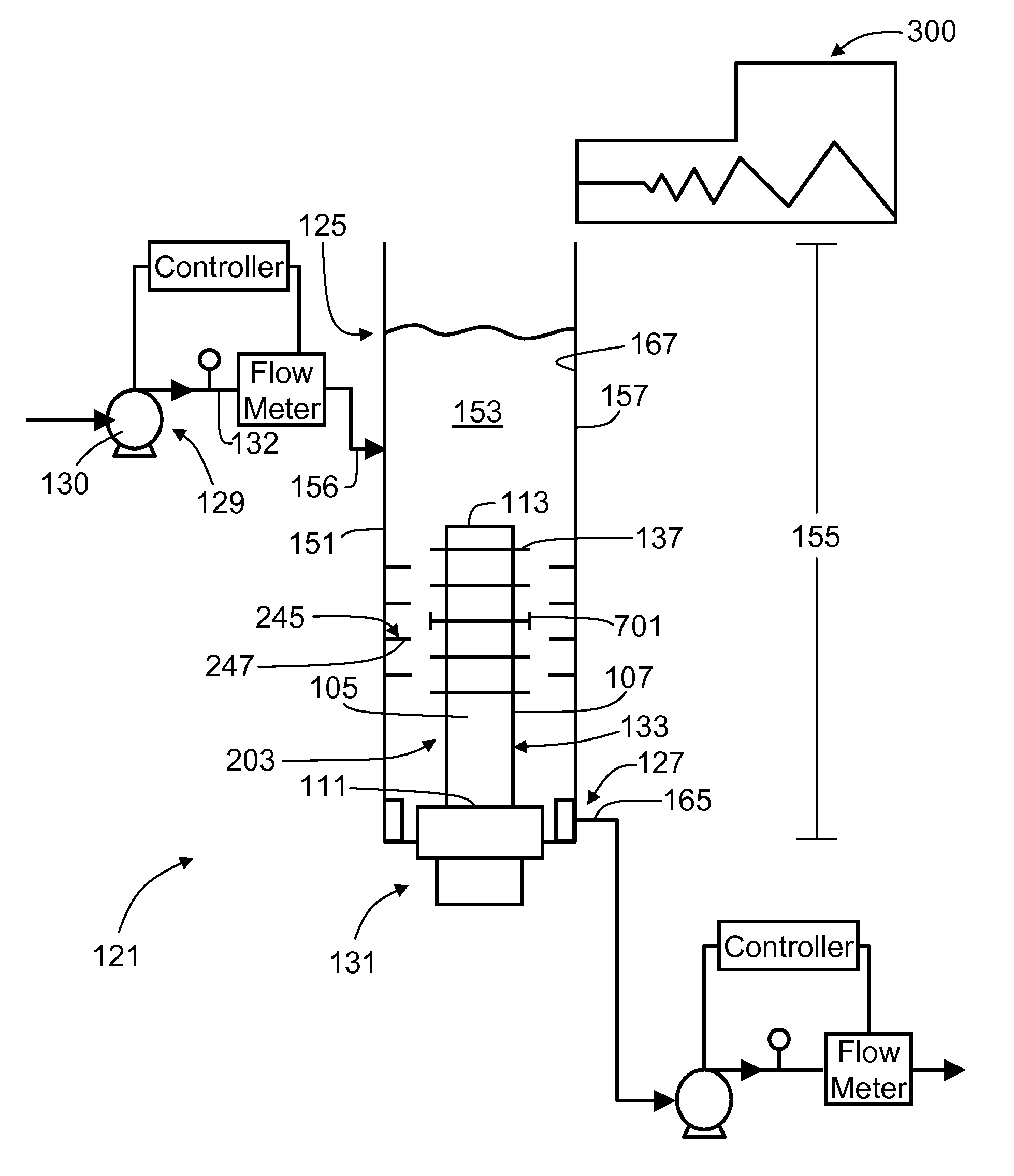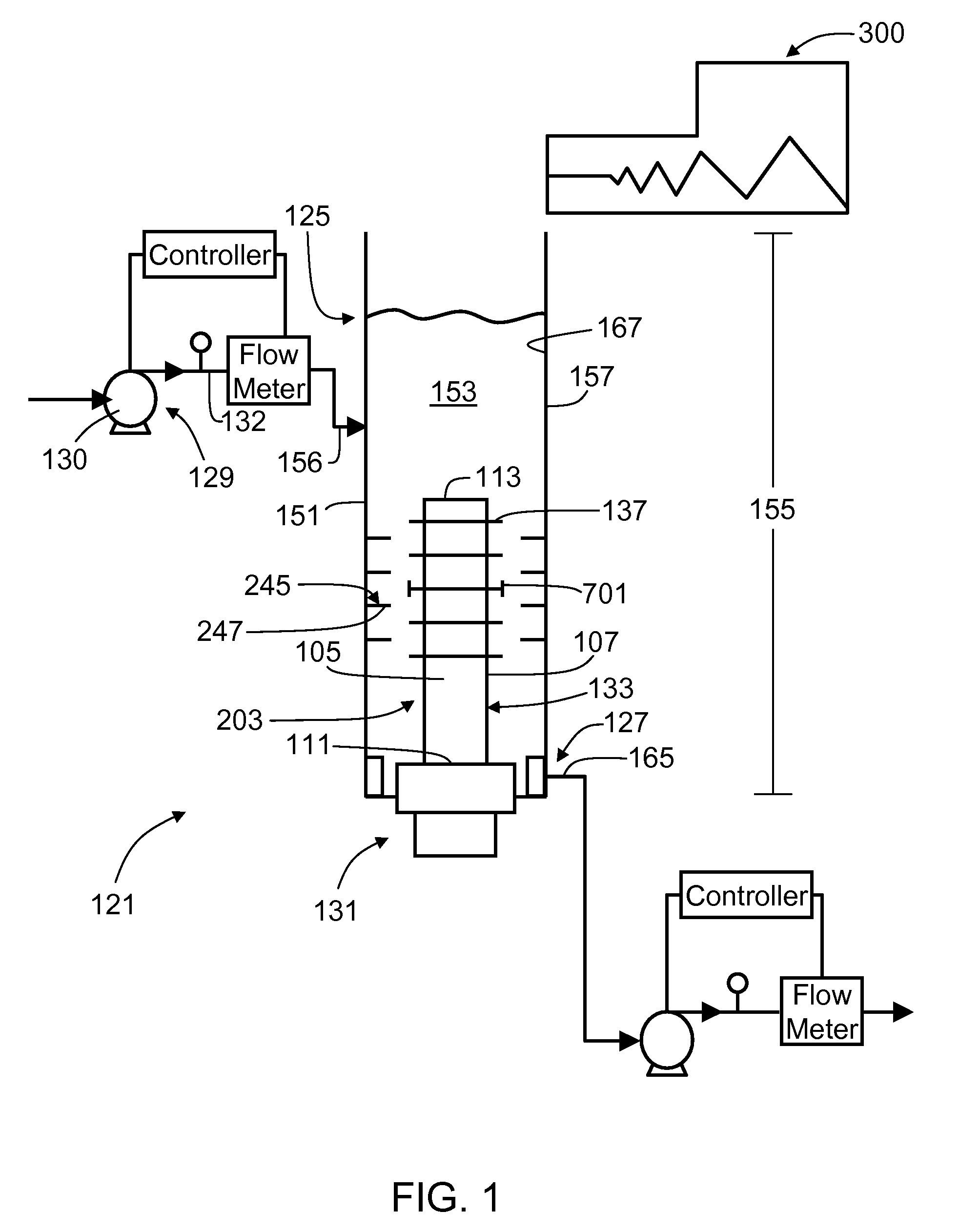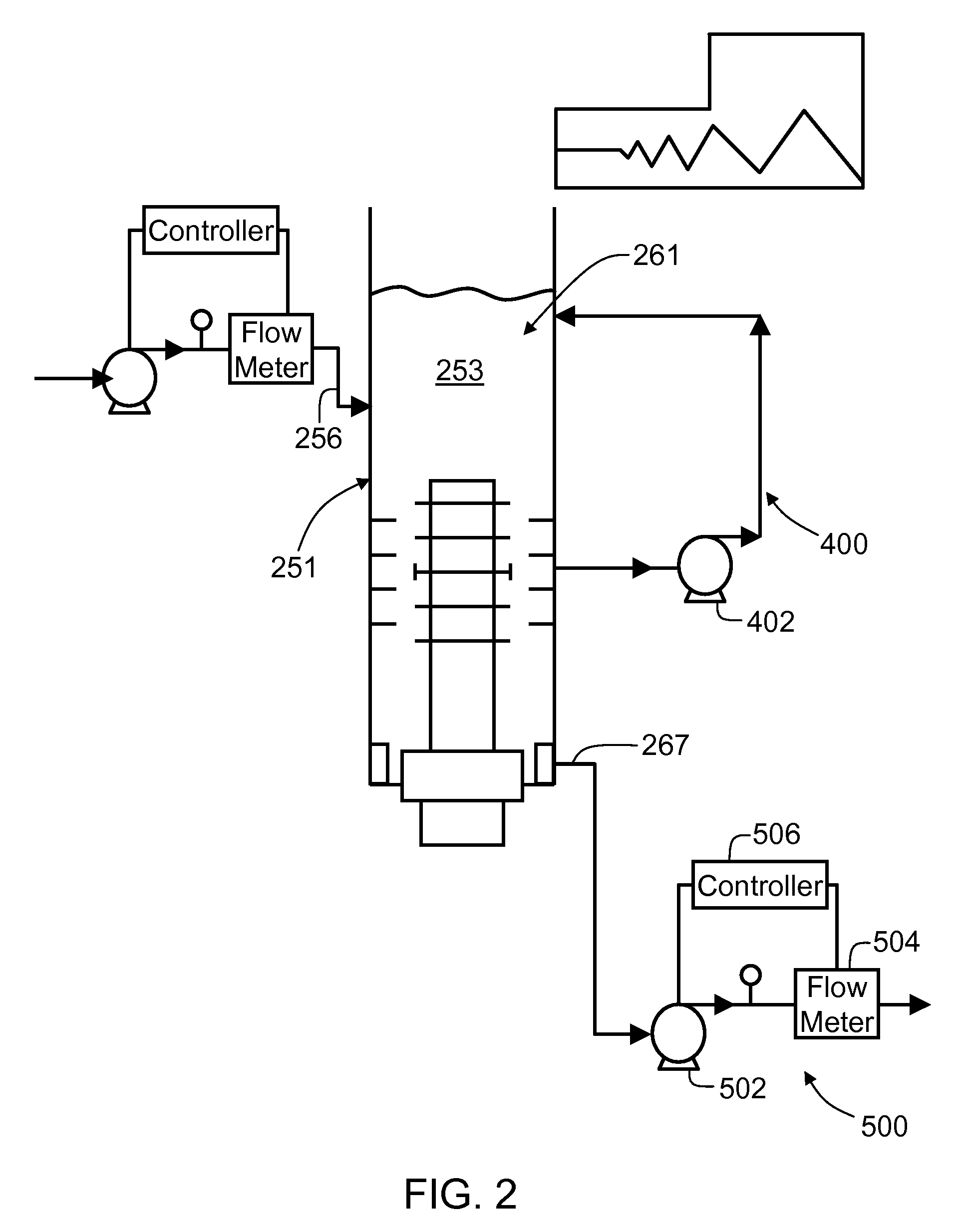Ultrasonic treatment chamber for particle dispersion into formulations
a technology of particle dispersion and treatment chamber, which is applied in the direction of mixing, transportation and packaging, chemical instruments and processes, etc., can solve the problems of human error, time, energy and money, and the method of mixing powders and particulates into formulations,
- Summary
- Abstract
- Description
- Claims
- Application Information
AI Technical Summary
Benefits of technology
Problems solved by technology
Method used
Image
Examples
example 1
[0087]In this Example, various particulates were mixed with tap water in the ultrasonic mixing system of FIG. 1 of the present disclosure. The ability of the ultrasonic mixing system to effectively mix the particulates into the water formulation to form a homogenous mixture was compared to manually stirring the mixture in a beaker. Additionally, the ability of the particulates to remain homogenously mixed with the water was analyzed and compared to the mixture produced using manual stirring in the beaker.
[0088]Each particulate-type was independently added to tap water and mixed using either the ultrasonic mixing system of FIG. 1 or a spatula manually stirring the liquid in a beaker. All samples of particulate-containing water were visually observed immediately after mixing, 10 minutes after mixing, 1 hour after mixing, 20 hours after mixing, and 30 hours after mixing. The various particulates, amounts of particulates, amount of tap water, and visual observations are shown in Table 3...
PUM
| Property | Measurement | Unit |
|---|---|---|
| Frequency | aaaaa | aaaaa |
| Frequency | aaaaa | aaaaa |
| Flow rate | aaaaa | aaaaa |
Abstract
Description
Claims
Application Information
 Login to View More
Login to View More - R&D
- Intellectual Property
- Life Sciences
- Materials
- Tech Scout
- Unparalleled Data Quality
- Higher Quality Content
- 60% Fewer Hallucinations
Browse by: Latest US Patents, China's latest patents, Technical Efficacy Thesaurus, Application Domain, Technology Topic, Popular Technical Reports.
© 2025 PatSnap. All rights reserved.Legal|Privacy policy|Modern Slavery Act Transparency Statement|Sitemap|About US| Contact US: help@patsnap.com



